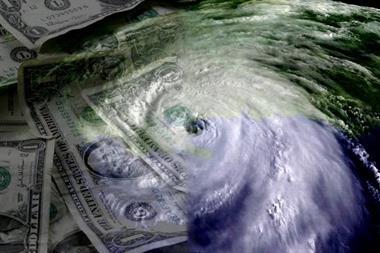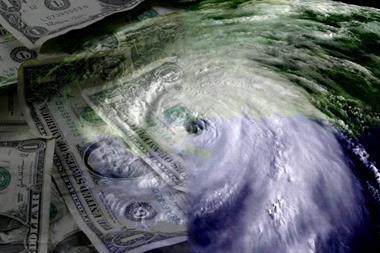European bonds will be cheaper than US because of PERILS
Munich Re says the volume of cat bonds in 2010 will be $5bn, with interest rates falling slightly.
There was $3.5bn worth in 2009. Overall the outstanding bonds rose marginally to just under $12bn. The spread required by investors also returned to previous levels, Munich Re said.
For 2010 the required spread is expected to fall by some 50 basis points up to the middle of the year. It will still be possible to place European risks at lower risk premiums than those for US risks.
The development of the PERILS joint venture, which tracks sums insured and insured losses in the industry, making it possible to determine market-loss-based triggers for European risks, will favour the placing of European insurance risks on the capital markets.
Risks alone
“The insurance securitisations sector also learned a few lessons from the financial crisis. Today’s structures are such that investors can now be sure they are really investing only in insurance risks”, said Munich Re Board member Thomas Blunck.
“As investor confidence grows and return expectations fall to appropriate levels, catastrophe bonds can again assume their intended role. The capital market is a supplementary risk carrier especially for peak risks for which capacity is in short supply in the traditional insurance market.”
The key trends in the 2009 market:
- As a consequence of the Lehman collapse, the spread required by investors had increased significantly as many hedge funds were forced to sell bonds on the secondary market. In the third and fourth quarters, however, risk premiums again sank appreciably.
- The demand from investors was substantial – a sign of high liquidity as various bonds expired and confidence returned. The composition of investors has clearly shifted towards specialised funds and insurers/reinsurers. At the same time, hedge funds have become less important.
- The credit and counterparty risk in the collateral funds was minimised after four catastrophe bonds were directly affected following the collapse of Lehman. Many new issues are secured through money market funds and state-guaranteed securities so that investors can again be confident they are primarily taking on an insurance risk that is no longer accompanied by a credit risk they cannot properly assess.
- By far the largest share of new catastrophe bond issues in 2009 involved US risks: more than four-fifths of the volume issued related to windstorm and earthquake risks in the USA.
Prices
Overall, the prices for catastrophe bonds from the second quarter have reverted to mid-2008 levels. “Prices indicate that the market has recovered,” said Rupert Flatscher, Head of Munich Re’s Risk Trading Unit.
“This year will see the expiry of bonds totalling $4.5bn and the proceeds will need to be reinvested. The good performance of the catastrophe bond market also during the financial crisis should ensure an influx of capital of around $1bn into funds specialising in such bonds.
“In addition, the basic interest shown here by new investors such as pension funds should translate into further growth in the medium term.”
Websites
Hosted by comedian and actor Tom Allen, 34 Gold, 23 Silver and 22 Bronze awards were handed out across an amazing 34 categories recognising brilliance and innovation right across the breadth of UK general insurance.













































